DWELL BEYOND THE ORDINARY
ADU Regulations in New York: The Complete Guide

Thinking about adding an accessory dwelling unit (ADU) to your property in New York? You’re not alone. As housing demand rises, more homeowners are exploring ADUs as a way to create flexible living space or generate rental income.
Here’s the challenge: New York doesn’t have a single statewide set of ADU rules—at least, not yet. Instead, every city, town, and village sets its own regulations, which means what’s allowed in one area might be restricted just a few miles away.
And while statewide legislation is in development, local requirements still vary widely from one city or town to the next.
In this guide, we’ll break down everything you need to know about adding an ADU to your property in New York—so you can get clarity, make informed decisions, and move forward with your project without getting buried in legal jargon.
Are ADUs Allowed in New York?

Yes, many areas in New York permit accessory dwelling units (ADUs). However, the requirements for ADUs vary depending on where you live in the state. It’s best to check with your local officials to find out if they allow them and what their requirements are.
It’s worth noting that the New York Senate has introduced Senate Bill S4547A, which outlines regulations for accessory dwelling units (ADUs).This bill directs localities to adopt ADU regulations that allow them on lots zoned for residential use, permits one ADU per lot, and only allows them to be used for rental purposes with a lease of at least 30 days.
As of this writing, the bill is under review and has not yet passed. While it outlines statewide guidelines, it leaves certain requirements up to local officials, such as height, square footage, and permitting. So even if the law changes, your local rules will still apply. Always verify with your local officials.
ADUs That Are Allowed in New York
All Zook Cabins ADU models meet New York’s size requirements. Our smallest model is 597 square feet, and the largest is 848 square feet—comfortably within the allowed range. Browse the models below to find one that suits your property and complies with local regulations.
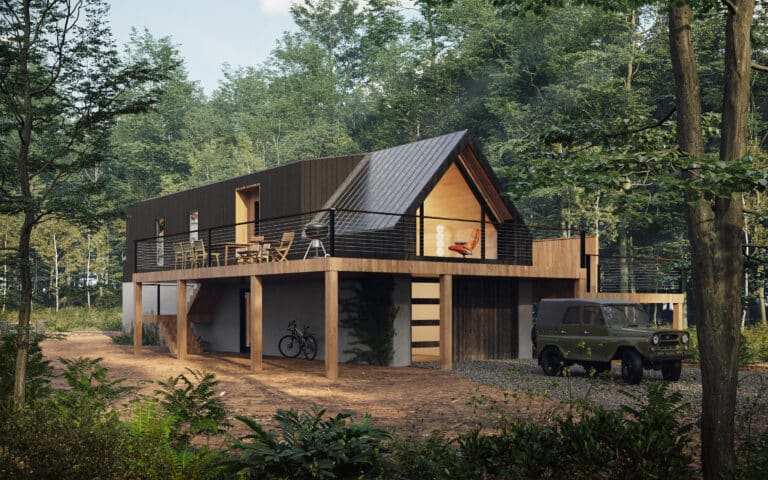
The A-Frame ADU
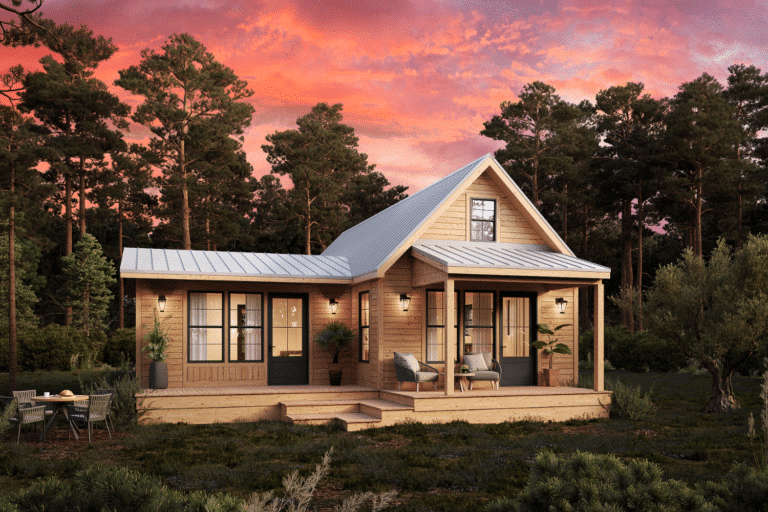
The Grove ADU
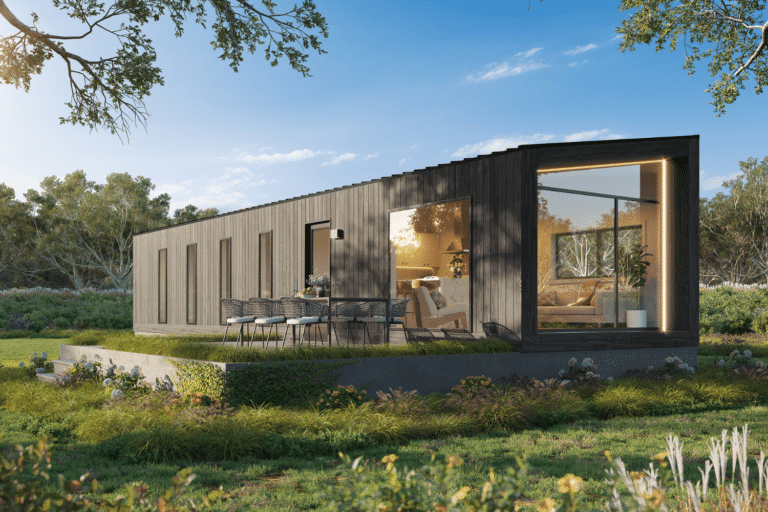
The Luna ADU
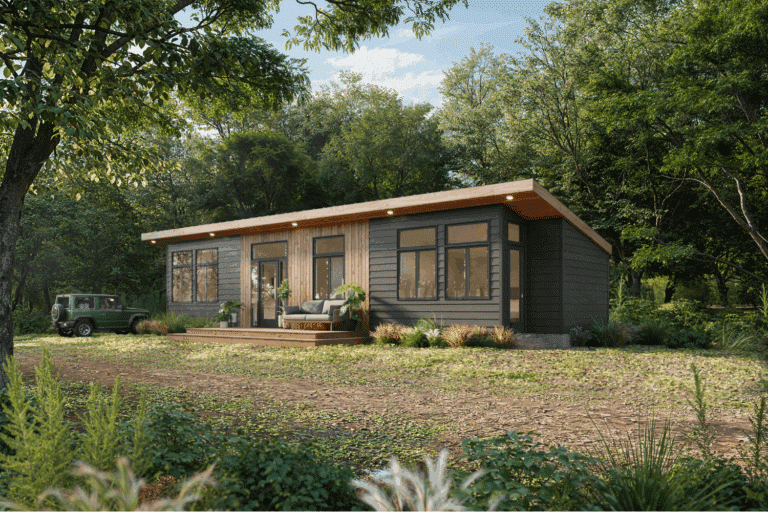
The Sonoma ADU
What Is Considered An ADU in New York?
According to the Senate Bill, which is currently being reviewed, an accessory dwelling unit (ADU) is an apartment on a lot with a primary residence that includes permanent provisions for sleeping, eating, cooking, and sanitation. This likely means that the structure being used must comply with building code requirements for an apartment.
The type of structure, size, placement, insulation, electrical, and other requirements will likely vary depending on where you live in New York. Some areas may require an ADU to be a minimum of 300 square feet and placed on a permanent foundation, while others allow a minimum of 200 square feet and tiny homes on wheels (THOW) to be used as ADUs.
As always, you must contact your local planning, zoning, and building department to ensure that the structure you plan to construct is an acceptable accessory dwelling unit.
Can Park Model Tiny Homes Be Used As ADUs?

In some cases, park model tiny homes, which would be classified as THOWs, are permitted as accessory dwelling units. To find out if park model tiny homes are allowed in New York, check out our guide to tiny homes in the state.
It’s important to note that this varies not only by state but also between counties and cities, so be sure to check with local officials before using a park model tiny home as an ADU.
If you’re unsure what the difference between a park model tiny home and an ADU is, check out this clear-cut guide comparing the two structures.
Can Log Cabins Be Used As An ADU?
Log cabins can be used as ADUs in New York, provided they comply with all applicable regulations, including minimum and maximum size requirements.
Generally, ADUs must be a minimum of 200 square feet and cannot be larger than the principal structure on your property. With this in mind, many of our log cabins are built to suit New York’s sizing requirements.
If none of the models below are quite your style, check out our line of modern cabins that may be a better fit for your needs.
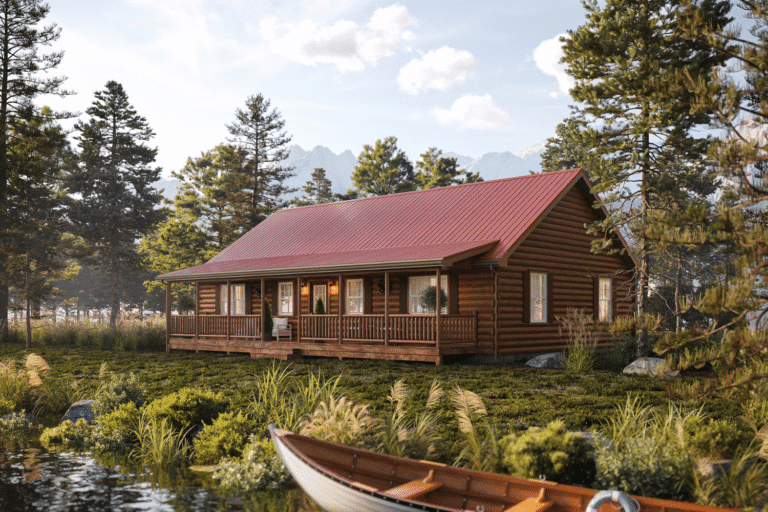
The Musketeer
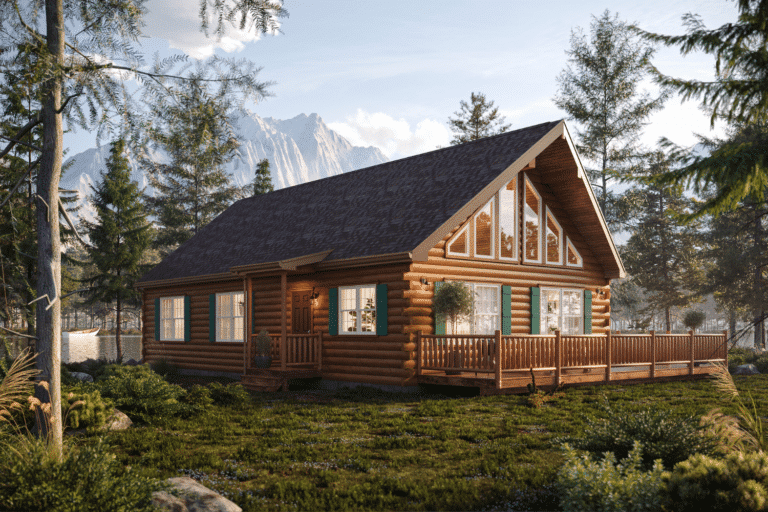
The Chalet
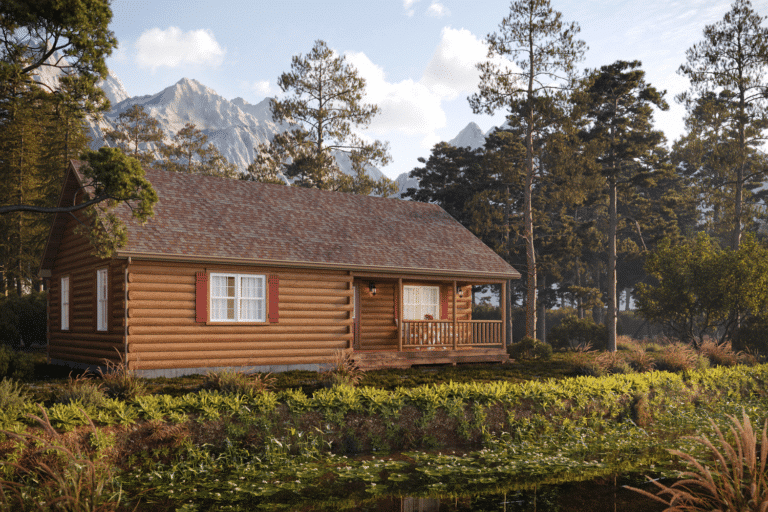
The Frontier
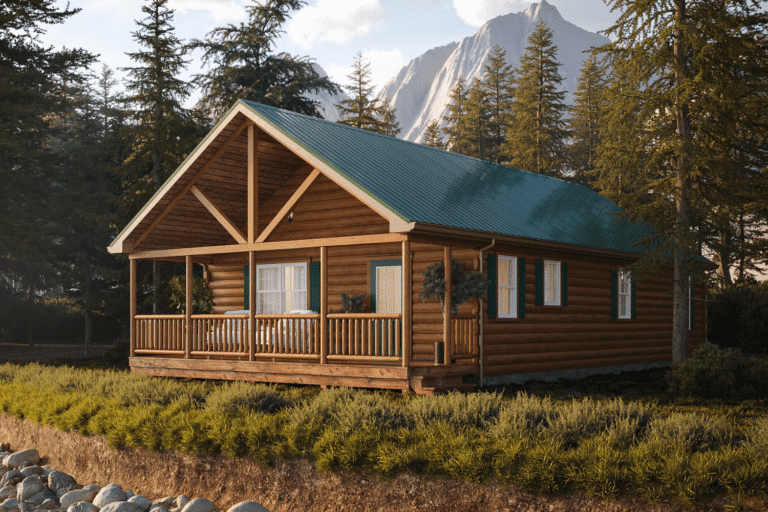
The Settler
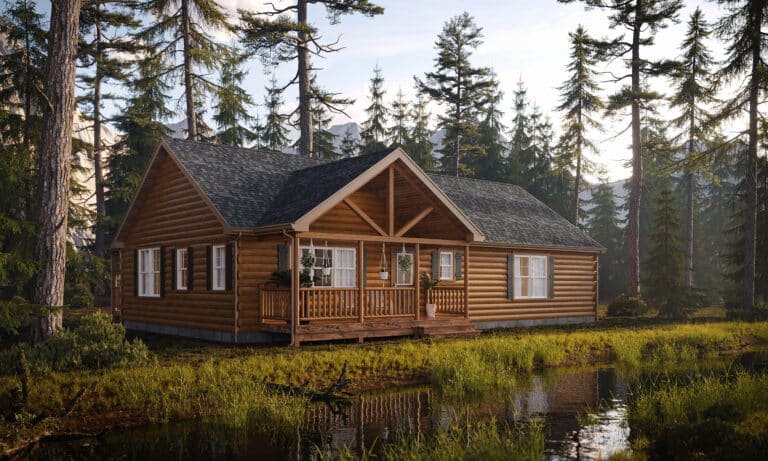
The Pioneer
Can Modern Cabins Be Used As ADUs?
Yes, Modern Cabins can be used as ADUs if they meet the ADU requirements outlined by your local officials. We recommend the models below as they are available in sizes that are compliant with most local regulations.

The Two Pines
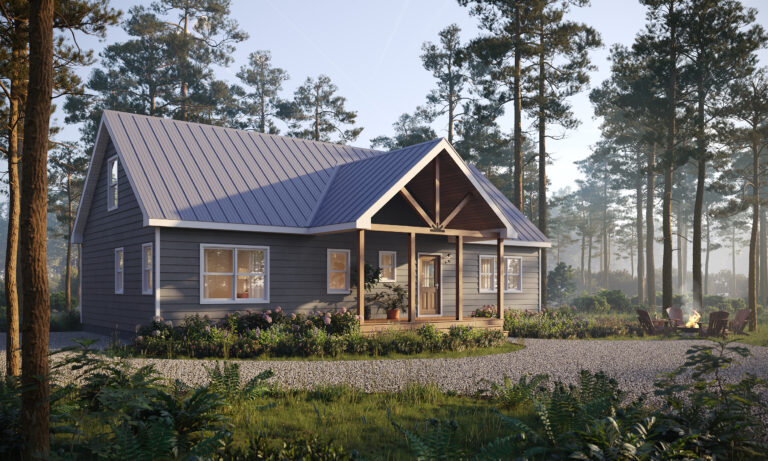
The Franklin
What Is The Difference Between A Prefab ADU & A Modular ADU?
*This is our 1-bedroom A-frame ADU*
Prefab & modular ADUs vary in how they are constructed.
Prefab or prefabricated ADUs are built off-site and delivered fully assembled and ready for installation. Some shed companies construct prefab ADUs like the ones offered by Sheds Unlimited. These are a great way to add a second dwelling to your property quickly, but they may not appreciate like a standard home.
In contrast, modular ADUs are built in sections off-site but are fully assembled on-site. Unlike prefab ADUs, these structures often appreciate like a traditional home and may even be parceled off and sold separately from the primary dwelling.
To better understand how these two options differ, check out our guide on prefab and modular ADUs.
Can I Build An ADU on My Property in New York?

Yes, you can, provided that your property is properly zoned for ADUs and meets the sizing, placement, and other requirements outlined in your area’s building code.
ADUs can be constructed as entirely new, standalone structures or added onto existing buildings. Contact your local building and zoning department to obtain the necessary permits, verify that your property is appropriately zoned, and confirm that your project complies with local building codes.
What is the Minimum Size for an ADU?
The exact minimum size for an ADU in New York may depend on where you reside, but it’s typically around 200 square feet.
Can My ADU Be Bigger Than My House?
No, in most areas, accessory dwelling units are not allowed to be larger than the principal structure on the property, including the main house.
Do You Need A Permit For An ADU in New York?

Yes, you’ll likely need a permit to build an ADU in New York. However, the specific permits required can vary depending on your location and the scope of your project. In most cases, you’ll need a zoning permit to confirm eligibility and a building permit to approve construction.
Some jurisdictions may even have permits specifically designated for ADUs. That’s why it’s essential to consult your local building and zoning officials to determine exactly what’s required for your property.
Are There Any Incentives or Grants for ADUs in New York?

Yes, there is the New York Plus One ADU program, which is offered through the state Department of Homes & Community Renewal.
What is The NY State Grant For ADUs?
The Plus One grant is designed to help low- to moderate-income property owners add accessory dwelling units to their properties. It offers up to $125,000 in financial assistance to support the construction or renovation of an ADU. You can find your local program administrator and access the necessary application forms on the New York State Homes and Community Renewal (HCR) official ADU program page on the New York State HCR website.
What Features are Included in an ADU from Zook Cabins?

While specific features vary by model, our ADUs offer a range of modern designs with various floor plans, allowing you to choose the one that best fits your property. Each unit includes a fully finished interior with a kitchen, bathroom, and bedroom space, making it move-in ready upon installation. To explore detailed features for each model, visit our ADU page.
Certain interior elements—such as countertops, tile work, and cabinet colors—can be customized to reflect your personal style. Speak with a sales representative to learn more about available options.
Are Zook Cabin’s ADUs Built To Code?
Yes, all our ADU models were carefully designed with minimum square footage and room requirements in mind, ensuring they comply with local requirements.
Since they are modular homes, they must be placed on a permanent foundation. If you have any questions about what type of foundation is best for your home, please contact us; we’d be happy to help.
Can an ADU Have Multiple Bedrooms and Bathrooms?
Yes, while there are often minimum and maximum square footage requirements for ADUs that may limit the number of bedrooms and bathrooms, you can typically include one to two bedrooms and one or two bathrooms in most ADUs.
If you’re interested in a layout with multiple bedrooms or bathrooms, our Grove, Luna, and A-Frame ADU models all offer layouts featuring 1-2 bedrooms and bathrooms.
Are ADUs A Good Investment?

Absolutely. One of the most common and financially beneficial uses for an ADU is as a rental unit. While regulations vary by location, many property owners can generate steady income by leasing the unit.
New York’s Plus One ADU Program can also offset upfront construction costs, reducing your out-of-pocket investment. This improves short-term affordability and may increase your property’s resale value over time.
What Counties in New York Allow ADUs?

In New York, counties are not responsible for enforcing ADU regulations. Instead, local municipalities, such as cities, towns, and villages, determine and implement these rules. Because many areas fall outside the jurisdiction of a city or town, we’ve included a list of all New York counties along with the best local contact for ADU-related questions.
Since municipal governments set these regulations, you may prefer to skip directly to your city, town, or village to find specific ADU rules.
Keep in mind that many communities in New York are organized as villages. If you live in a village, check with village officials before contacting county officials.
What Cities in New York Allow ADUs?

Legislation regarding ADUs is still being developed at the state level, and many cities are waiting on that guidance before establishing their own regulations. Below is a list of New York cities that clearly allow or prohibit ADUs.
If you don’t see your city listed, you’ll find a second list that covers the remaining cities out of New York’s 62 that do not have clearly defined ADU regulations, so it’s difficult to provide definitive answers for those areas.
Keep in mind that these lists may change as statewide legislation progresses.
| City | Contact | Allows ADUs? | Min Sq. Ft. | Max Sq. Ft. |
| Albany | Planning & Development | Not currently | N/A | N/A |
| Auburn | Planning Department | Yes | Unclear | 800 |
| Batavia | Bureau of Inspection | Yes | Unclear | Unclear |
| Beacon | Building Department | Yes | 200 | 800 |
| Binghamton | Code Enforcement | Yes | Unclear | 325 |
| Cohoes | Planning Department | Yes | Unclear | 40% of the principal dwelling unit’s |
| Elmira | Code Enforcement | Yes | Unclear | Unclear |
| Fulton | Code Enforcement | Yes | 325 | 30% of the gross floor area of the principal structure |
| Geneva | Development Services | Yes | 500 | Unclear |
| Hornell | Code Enforcement | Possibly | Unclear | Unclear |
| Hudson | Code Enforcement | Possibly | Unclear | Unclear |
| Ithaca | Planning & Development | Not Yet | Not stated | 600 or 40% of the primary structure |
| Johnstown | Code Enforcement | Yes | Not stated | 750 or ⅓ of the floor area of the principal structure |
| Kingston | Planning Department | Yes | 300 | 650 or 50% of the square footage of the primary dwelling, whichever is greater |
| Lockport | Planning & Zoning | Not Exactly | Not stated | 500 |
| NYC | Housing & Preservation | Yes | Unclear | 800 |
| Niagara Falls | Code Enforcement | Yes | Unclear | Unclear |
| Oneida | Planning & Development | Possibly | Unclear | Unclear |
| Oneonta | Code Enforcement | Yes | Not specified | No more than 35% of the floor area of the principal structure |
| Poughkeepsie | Building Department | No | Unclear | Unclear |
| Rensselaer | Planning, Building & Zoning | Yes | Not stated | 35% of the principal dwelling’s floor area or 400 SF, whichever is less |
| Rome | Code Enforcement | Yes | Not stated | 60% of the floor area of the principal dwelling or 1,800 SF, whichever is less |
| Syracuse | Zoning Administration | Yes | Not specified | Not specified |
| Troy | Code Enforcement | Possibly | Unclear | Unclear |
| Utica | Development Department | Yes | Not stated | 800 |
| Watertown | Planning & Zoning | Yes | Not specified | Not specified |
What are the ADU requirements in Albany?
At the moment, it appears that ADUs are not permitted in Albany. However, legislation is being considered to allow them. The fire department has raised concerns over occupancy and potential fire hazards from having multiple dwelling units on a single property.
Contact the Albany Department of Planning & Development to advocate for these proposed changes to be adopted or to get updates on the status of this legislation.
What are the ADU requirements in Auburn?
The city of Auburn outlines the following requirements for ADUs:
- Number of ADUs: 1
- Maximum Size: 800 square feet
- Setbacks: Must meet required yard requirements in your zoning district
- Required Occupancy: The owner of the property must reside in either the ADU or the primary dwelling at all times
Since some requirements are based on your property’s zoning, contact the Auburn Planning & Development Department to ensure compliance with all applicable regulations.
What are the ADU requirements in Batavia?
Batavia allows accessory dwelling units in R-1 residential districts with a special use permit so long as they adhere to the following requirements:
- Required Occupancy: Owner must reside in the primary single-family residence
- Garages may not be converted into ADUs
Additional requirements may apply. Contact the Bureau of Inspection to ensure complete compliance.
What are the ADU requirements in Beacon?
Beacon allows accessory apartments, which must meet the following requirements:
- Owner-Occupancy: Required
- Minimum Size: 200 square feet
- Maximum Size: 1,000 square feet
Additional requirements likely apply. Contact the Beacon Building Department to ensure that your ADU plans comply with all applicable standards.
What are the ADU requirements in Binghamton?
The ADU requirements in Binghamton, NY, are as follows:
- Owner-Occupancy: Required
- Maximum Floor Area: 325 square feet
- Number Per Lot: 1
- Permitted Zoning Districts: R-1, R-2, R-3
The requirements regarding minimum square footage, permitting, and setbacks are unclear. To ensure compliance with all of these development standards, contact Code Enforcement.
What are the ADU requirements in Buffalo?
It is unclear exactly what the specific standards for ADUs in Buffalo, NY, are, but the city does appear to follow New York State building codes and requirements, which suggests that ADUs may be permitted. To determine the exact regulations and whether an ADU is allowed on your property, it’s best to contact Buffalo’s Department of Permit and Inspection Services.
What are the ADU requirements in Cohoes?
The ADU requirements in Cohoes, NY, are as follows:
- Owner-Occupancy: Required
- Number Per Property: 1
- Location: Inside the principal unit or in an accessory building
- Maximum Size: 40% of the area of the principal dwelling unit
There are typically additional requirements for permitting, setbacks, and design. To certify compliance with all applicable regulations, contact the Cohoes Planning Department.
What are the ADU requirements in Elmira?
Elmira clearly outlines the following requirements for accessory dwelling units:
- Number Per Property: 1
- ADUs are NOT permitted on the same lot as a multifamily dwelling or apartment
- Owner-Occupancy: Required
Additional requirements may apply regarding size, placement, and permitting, but are not clearly outlined in the city code. For clarification on what is allowed, contact Code Enforcement.
What are the ADU requirements in Fulton?
Fulton outlines the following standards for ADUs within the city:
- Permitted Zoning District: R-1A
- Number of ADUs Per Property: 1
- Minimum Size: 325 square feet
- Maximum Size: 30% of the gross feet of the floor area of the principal building
- Maximum Number of Occupants: 2
- Occupants must be related to the owner
- Owner-Occupancy: Required
The Bureau of Code Enforcement reviews and approves ADU applications to ensure they meet local zoning and building requirements. If you have questions or want help preparing your application, contact their office for guidance.
What are the ADU requirements in Geneva?
Accessory dwelling units in Geneva must comply with the following standards:
- Attached ADUs:
- The principal structure must have at least 2,000 square feet in habitable floor area
- ADU entrance is located on the side or rear facade of the principal structure
- Detached ADU:
- Must be located in the rear yard
- Must be a minimum of 500 square feet
- Maintained as an accessory use and may not be subdivided
- Number of Rooms: No more than 2 bedrooms, and at least one kitchen and bath
- Owner-Occupancy: Required
To certify compliance with all applicable requirements, contact Development Services.
What are the ADU requirements in Hornell?
The city of Hornell permits accessory apartments, which are defined as separate and complete dwelling units that are either contained within or attached to the structure of a single-family home. They may also be located in an accessory building on the same lot as the principal single-family residence.
This definition aligns closely with the typical understanding of an accessory dwelling unit (ADU), suggesting that the city likely allows them.
However, the exact requirements are unclear. Contact Code Enforcement to learn more about Hornell’s standards for accessory apartments.
What are the ADU requirements in Hudson?
It seems accessory dwelling units are currently not permitted in Hudson, but legislation allowing them may be in development. A proposed ordinance outlines the conditions under which ADUs could be approved, should the law pass.
According to the draft, each property would be allowed one ADU. The property owner would be required to live on-site, and any ADU would need to be built on a permanent foundation. The unit could not exceed the gross floor area of the principal structure and would need to meet all zoning district setback requirements.
In addition, both a building permit and a certificate of occupancy would be required for construction and use.
To find out the most up-to-date information on the status of ADUs in Hudson, contact Code Enforcement.
What are the ADU requirements in Ithaca?
The following requirements are outlined in proposed legislation for adding accessory dwelling units to properties in Ithaca:
Maximum Size:
A detached ADU may be up to 600 square feet. An attached ADU may not exceed 40 percent of the total area of the primary structure.
Setbacks:
Detached ADUs must be located at least four feet from the side and rear property lines. They are not allowed in the front yard. Attached ADUs do not have any specific setback requirements, but they also are not permitted in the front yard.
All other regulations are still under consideration. For the most current updates on ADU legislation, contact the Ithaca Planning and Development Department.
What are the ADU requirements in Johnstown?
The city of Johnston outlines the following requirements for accessory dwelling units:
- Number of Units: 1
- Owner-Occupancy: Required
- Maximum Size: 750 square feet or ⅓ the floor area of the principal residential structure on the lot, whichever is less
- Placement:
- No closer than 15 feet behind the front face of the principal structure
- Detached ADUs need to be positioned either behind or in line with the front elevation of the main residence
- Setbacks: Must adhere to zoning district standards
Because specific requirements can vary depending on the zoning district or the type of ADU you are planning to build, it’s best to contact the Johnston Code Enforcement Department for guidance.
What are the ADU requirements in Kingston?
The city of Kingston has outlined the following standards for accessory dwelling units:
- Minimum Size: 300 square feet
- Maximum Size: 50% of the primary structure’s square footage or 650 square feet, whichever is greater
- Setbacks:
- Side & Rear Yard: Minimum of 4 feet
- Front Yard: Not permitted on front yard unless 30 feet from front property line
- Owner-Occupancy: Required
To confirm that your project meets all relevant requirements, reach out to Kingston’s Planning Department.
What are the ADU requirements in Lockport?
Lockport does not explicitly allow accessory dwelling units. However, the city does permit auxiliary housing units designed for aging family members. These units must meet the following requirements:
Maximum size: 500 square feet
Permit: Required
Although these structures serve a similar purpose, they are not classified as accessory dwelling units. As a result, Zook Cabins ADU models are not designed to comply with the specific size restrictions for auxiliary housing units in Lockport.
Due to the absence of detailed ADU regulations, it is unclear if a standard accessory dwelling unit would be approved in the city. That said, our park models do meet the size requirements for auxiliary housing units, offering a potential option for those seeking a compact, compliant solution.
To determine what exactly is allowed, contact Code Enforcement.
What are the ADU requirements in NYC?
Accessory dwelling units of up to 800 square feet are permitted in one- and two-family residential properties within low-density housing districts in New York City. This likely means only rural residential areas, as places within heavily populated parts of the city typically lack yard space to accommodate both a primary and accessory dwelling unit. To learn more about the exact requirements for residing within an ADU, contact the NYC Department of Housing Preservation & Development.
What are the ADU requirements in Niagara Falls?
Niagara Falls does allow accessory dwelling units. However, the zoning code does not specifically outline exact requirements regarding size, placement, or other details.
To understand what is permitted on your property, it is best to contact the Code Enforcement office directly. They can provide guidance tailored to your lot and ensure your plans align with local regulations.
What are the ADU requirements in Oneida?
It appears that ADUs may be allowed in Oneida, as they are briefly mentioned in the city’s municipal code. However, the only reference provided is that they may be permitted for use as short-term rentals.
To confirm if ADUs are allowed and to understand the specific requirements you need to meet, contact the Oneida Planning & Development Department.
What are the ADU requirements in Oneonta?
The ADU requirements in Oneonta are as follows:
- Number per property: 1
- Occupancy: The unit must be occupied by the property owner, a relative, or someone who resides in the principal dwelling. No more than two people are allowed to live in the ADU.
- Maximum size: The ADU may not exceed 35% of the floor area of the principal dwelling unit.
Additional requirements related to square footage, placement, and setbacks are clearly outlined in local regulations. For more information about what is permitted, reach out to Code Enforcement for guidance.
What are the ADU requirements in Poughkeepsie?
According to this article on ADU zoning, legislation regarding ADUs has been struck down and is not permitted in the city. To verify the accuracy of these statements and find out the status of ADUs within Poughkeepsie, contact the Building Department.
What are the ADU requirements in Rensselaer?
The city of Rensselaer does permit ADUs, provided they comply with the following standards:
- Owner-Occupancy: Required
- Number Per Lot: 1
- Setbacks: Must meet all applicable setbacks outlined for the zoning district in which it is located, with particular attention to front yard requirements
- Maximum Size: 35% of the area of the principal dwelling unit or 400 square feet, whichever is less
- Design: Must be consistent with the primary dwelling
Because some requirements depend on the zoning district where the ADU is being placed, it is important to confirm full compliance with the Planning, Building, and Zoning Department before moving forward.
What are the ADU requirements in Rome?
In order to place an accessory dwelling unit on your property in Rome, you must adhere to the following requirements:
- Number Per Lot: 1
- Height: No larger than the principal dwelling
- Maximum Size: 60% of the gross floor area of the principal dwelling or 1,800 square feet, whichever is less
- Placement & Setbacks: Detached ADUs must be located in the rear yard only and must be at least 10 feet from any lot line or the principal building
Additional requirements may apply. Contact Code Enforcement to confirm that your proposed ADU complies with all local regulations.
What are the ADU requirements in Syracuse?
Syracuse allows one accessory dwelling unit per property with a single-family home. Both attached and detached ADUs are permitted. Detached units must be placed at the side or rear of the primary structure and are limited to one bedroom.
The property owner is required to live in either the main residence or the ADU at all times. Specific details regarding size, placement, and setback requirements are unclear.
To ensure your project complies with local rules, contact the Zoning Administration for guidance.
What are the ADU requirements in Troy?
The city does not explicitly define any requirements for accessory dwelling units, but it appears they are allowed by right. This means you may be able to build an ADU on your property without needing a special permit or zoning variance.
To be sure your project complies with local regulations, contact the Code Enforcement Office directly. They can clarify what is permitted and guide you through the next steps.
What are the ADU requirements in Utica?
Accessory dwelling units in Utica must comply with the following requirements:
- Number Per Lot: 1
- Owner-Occupancy: Required
- Maximum Size: 800 square feet
Other requirements, including rules about placement, property setbacks, and structural compatibility, are likely to apply in addition to these core standards. These details are important to ensure your ADU project aligns with local zoning and building codes.
To move forward confidently and avoid costly missteps, contact Utica’s Urban & Economic Development Department. They can help verify that your proposed ADU meets all applicable regulations before you begin construction.
What are the ADU requirements in Watertown?
ADUs are permitted in Watertown under the following conditions:
- Number Per Parcel: 1
- Owner-Occupancy: Required
While accessory dwelling units are allowed, the city has not clearly defined rules around size, placement, or setback requirements. These details are essential for planning your build and ensuring compliance with local regulations.
Contact Watertown’s Planning and Zoning Department to determine what is permitted on your property. They can provide the most accurate and up-to-date information to help guide your project.
Cities With Unclear ADU Regulations in New York
The following cities do not have clearly defined regulations regarding ADUs. Below, you’ll find the appropriate government contact to determine whether they are allowed.
Because state legislation is still in development, local regulations may change once statewide requirements are finalized, so be sure to monitor the status of the proposed state legislation as it moves forward.
Searching For An ADU Builder Serving New York?

Ensuring your ADU is built to comply with local codes can feel overwhelming. From size and placement to foundation requirements and room count, there’s a lot to consider. If you’re looking for a builder who can simplify the process and deliver a code-compliant ADU, you’re in the right place.
That’s where Zook Cabins comes in. All of our ADU models range from 571 to 800 square feet, aligning with the size requirements in most New York jurisdictions. Models like the Grove, A-Frame, and Luna offer multiple bedrooms, while the Sonoma includes one, giving you flexibility to meet a variety of room requirements.
With sleek, modern designs, our units make it easy to complement the look of your principal structure while enjoying luxury living at an affordable price. They also serve as excellent rental properties.
If these models aren’t quite the right fit, many of our park models, log cabins, and modern cabins also meet ADU size requirements and may better match your property’s aesthetic.
If you have questions about adding one of our ADUs to your property, we’d love to help—reach out today to get started.
Tiny Home & ADU Rules By State: How Do They Compare?
In some parts of the U.S., park model tiny homes can be used as ADUs, while in others, they can’t. In certain areas, the rules for ADUs and park model tiny homes are nearly identical, but elsewhere, each structure type may be subject to entirely different regulations.
These rules don’t just vary from state to state—they can also differ between neighboring cities and towns.
Check out the table below to see how tiny home laws compare to ADU laws in New York or how they differ across other states.
